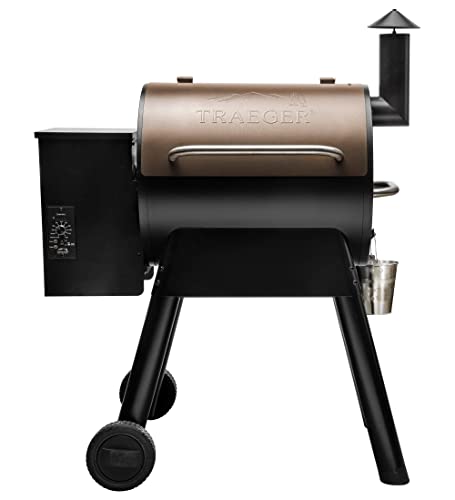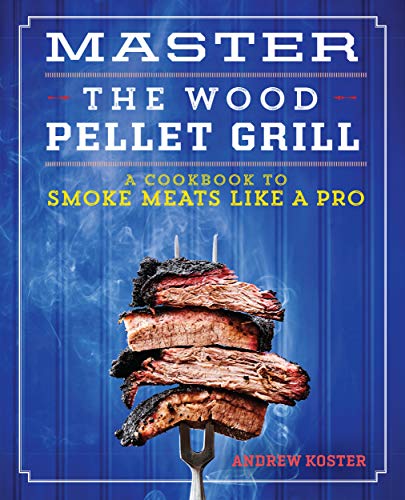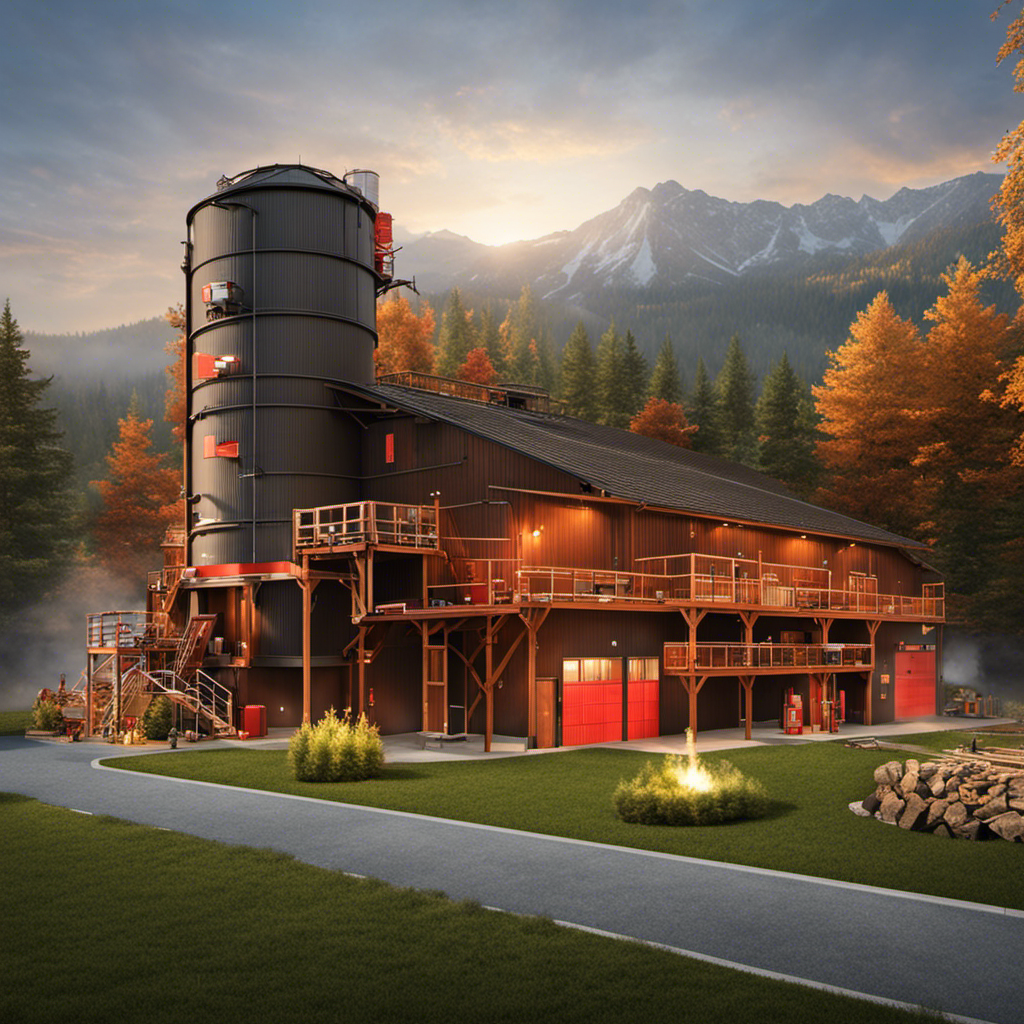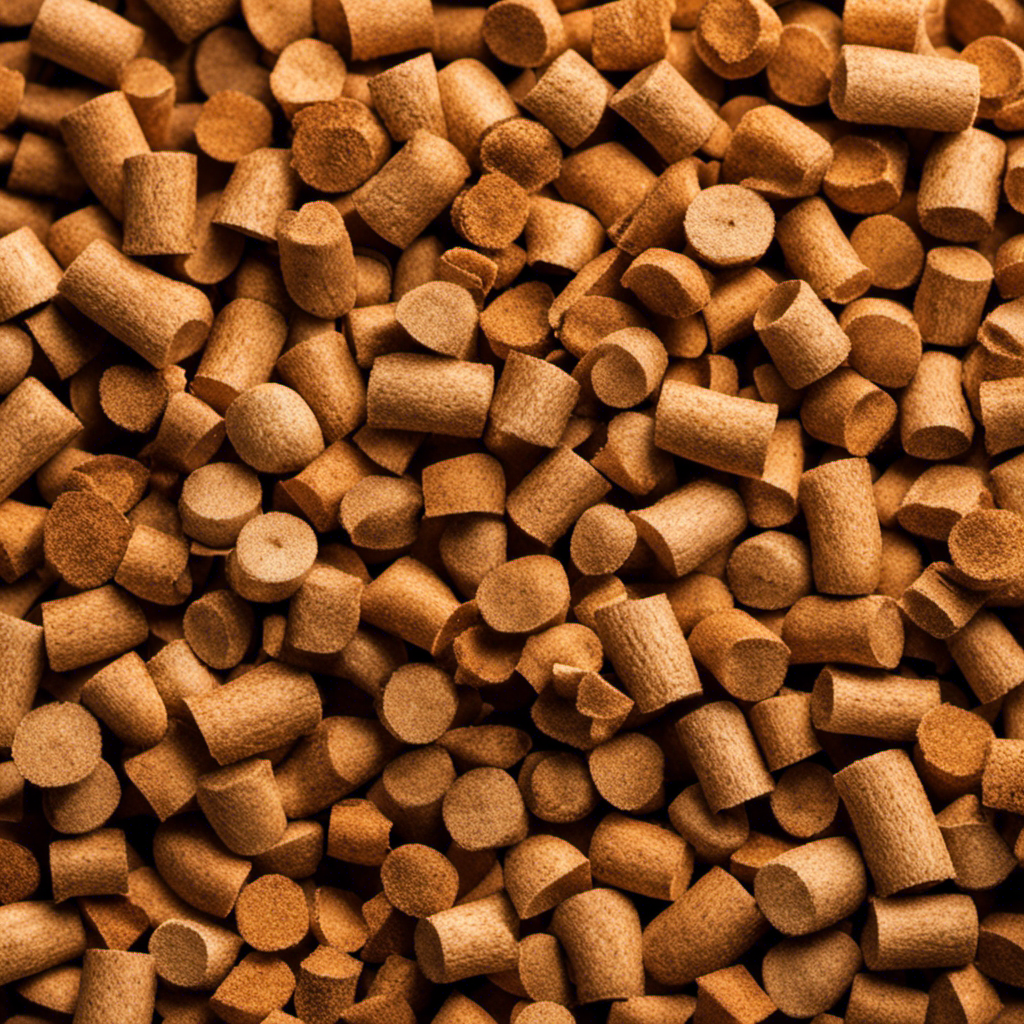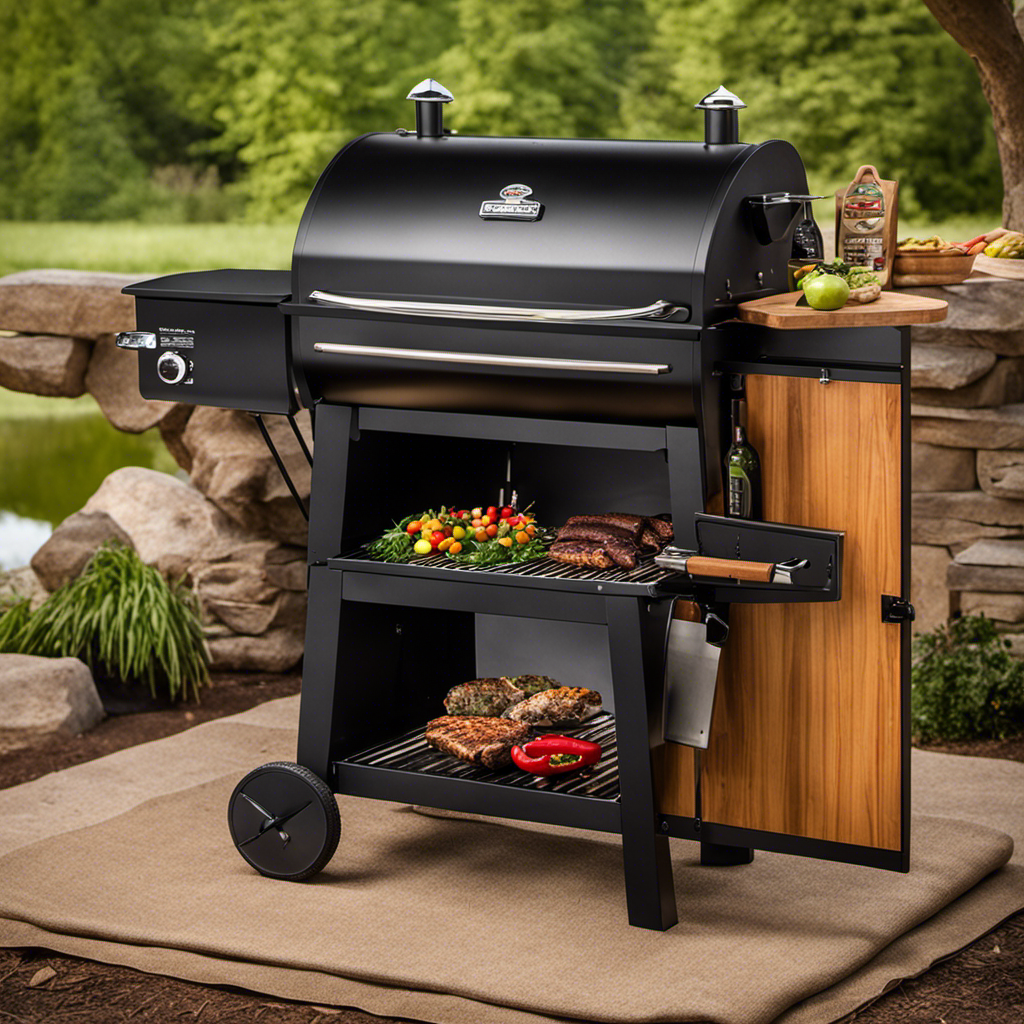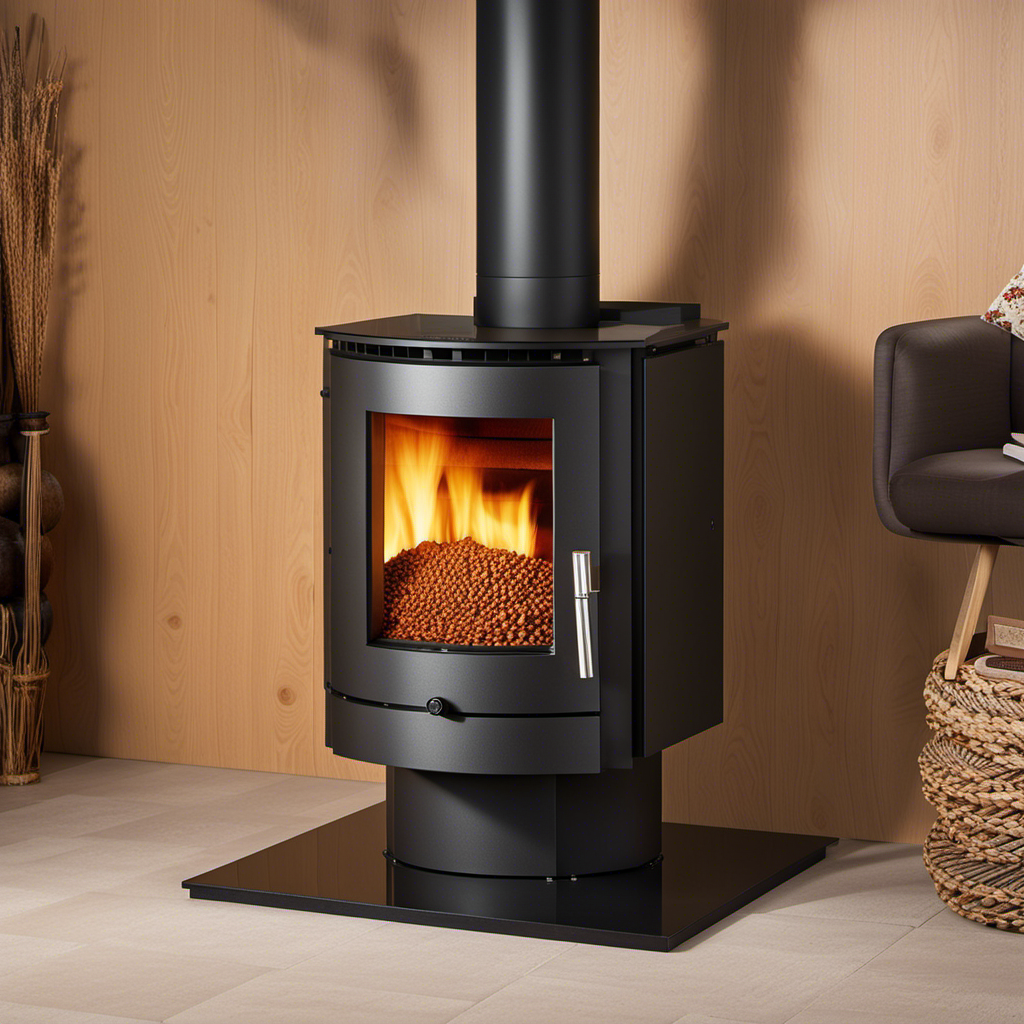Were you aware that keeping your wood pellet BBQ clean not only results in tastier dishes but also prolongs the lifespan of your grill?
As someone who has spent countless hours perfecting my BBQ techniques, I understand the importance of keeping your grill in top shape.
In this article, I will share my knowledge and experience on how to effectively clean a wood pellet BBQ. With the right tools and a step-by-step guide, you’ll be able to maintain a pristine grill and enjoy delicious BBQ all season long.
Key Takeaways
- Regular cleaning and maintenance of a wood pellet BBQ is important for better tasting food and to extend the lifespan of the grill.
- Proper cleaning techniques and supplies, such as grill brushes, sponges, and cleaning solutions, are necessary for maintaining cleanliness and longevity.
- Cleaning specific parts of the BBQ, such as the fire pot, auger system, and drip pan, is essential for optimal performance.
- Additional maintenance tips include wiping down the exterior of the grill, using a protective coating like a grill cover, and regularly cleaning the grates to prevent build-up.
Understanding the Importance of Cleaning a Wood Pellet BBQ
You need to understand the importance of cleaning your wood pellet BBQ regularly. Regular cleaning is crucial for maintaining the performance and longevity of your barbecue.
Not only does it ensure that your food cooks evenly and tastes great, but it also helps prevent flare-ups and reduces the risk of grease fires.
A clean wood pellet BBQ also promotes better airflow, which leads to more efficient combustion and consistent heat distribution.
Additionally, regular cleaning prevents the buildup of grease, ash, and food debris, which can attract pests and create unpleasant odors.
By keeping your wood pellet BBQ clean, you not only enhance its durability and functionality but also ensure a safe and enjoyable grilling experience.
Now, let’s move on to discussing the necessary tools and materials for cleaning your wood pellet BBQ.
Necessary Tools and Materials for Cleaning
When it comes to maintaining cleanliness and ensuring the longevity of your wood pellet BBQ, having the right cleaning supplies is essential. From grill brushes to degreasers and stainless steel cleaners, these tools are indispensable for keeping your BBQ spotless and functioning at its best.
In addition to using the proper cleaning supplies, it is also important to learn and implement proper maintenance techniques to prevent any damage and ensure optimal performance of your wood pellet BBQ.
Essential Cleaning Supplies
To effectively clean your wood pellet BBQ, gather the essential supplies like a brush, sponge, and cleaning solution. Cleaning your wood pellet BBQ is crucial to maintain its performance and extend its lifespan.
Here are some recommended cleaning techniques and products to ensure a thorough clean:
- Start by removing any leftover ash from the firepot and the cooking area using a brush.
- Mix warm water with a mild detergent or a specialized BBQ cleaner to create a cleaning solution.
- Use a sponge or soft cloth to scrub the cooking grates, interior surfaces, and grease tray.
- Rinse all surfaces thoroughly with clean water and dry them with a towel.
Proper Maintenance Techniques
Proper maintenance techniques can significantly enhance the performance and longevity of your wood pellet BBQ. By implementing regular cleaning methods and taking care of your grill, you can ensure that it performs at its best for years to come.
One of the most important maintenance techniques is to clean the grill grates after each use. This not only prevents the buildup of grease and food particles, but also helps to prevent rusting and corrosion.
Additionally, it is important to regularly check and clean the ash trap to ensure proper airflow and prevent any potential fire hazards.
By following these maintenance techniques, you can keep your wood pellet BBQ in optimal condition and enjoy delicious grilled meals for a long time.
Transitioning into the next section about the step-by-step guide to cleaning the grill grates, it’s essential to understand the importance of thorough cleaning for maintaining the overall cleanliness and efficiency of your wood pellet BBQ.
Step-by-Step Guide to Cleaning the Grill Grates
When it comes to cleaning my grill grates, I have found that using effective cleaning methods is essential for maintaining their longevity.
Over the years, I have tried various techniques and have learned what works best for getting rid of stubborn grease and grime.
In this discussion, I will share my knowledge and experience on the most effective cleaning methods and provide maintenance tips to ensure the longevity of your grill grates.
Effective Cleaning Methods
One of the most effective ways to clean a wood pellet BBQ is by using a wire brush to scrub off any leftover residue. This method ensures that your grill is free from any charred bits and grease, allowing for better heat distribution and preventing any potential flare-ups.
Here are three effective cleaning techniques and a recommended cleaning schedule to keep your wood pellet BBQ in top shape:
- Regularly scrape the grill grates with a wire brush after each use to remove any food particles or debris.
- Deep clean the grates at least once a month by removing them and soaking them in warm soapy water, then scrubbing with a brush.
- Clean the interior of the BBQ by removing the drip tray and scraping off any accumulated grease and ash.
By following these effective cleaning techniques and maintaining a regular cleaning schedule, you can ensure that your wood pellet BBQ remains in optimal condition.
Now, let’s move on to some maintenance tips for longevity.
Maintenance Tips for Longevity
To keep your wood pellet BBQ in great condition for years to come, it’s important to regularly inspect and replace any worn-out parts. Proper maintenance is key to ensuring that your grill performs at its best and lasts as long as possible. Here are some valuable maintenance tips to help you maintain your wood pellet BBQ:
| Maintenance Tips | Cleaning Techniques |
|---|---|
| Check for wear and tear | Clean the grates thoroughly |
| Replace worn-out parts | Remove and clean the drip tray |
| Lubricate moving parts | Brush and oil the grill grates |
Regularly inspecting your grill for any signs of wear and tear allows you to address any issues promptly. Replace any worn-out parts to maintain optimal performance. Additionally, regular cleaning of the grates and drip tray is essential to prevent the build-up of grease and debris, ensuring a safe and hygienic cooking environment. Now, let’s move on to cleaning the ash and grease tray.
Cleaning the Ash and Grease Tray
Make sure you empty the ash and grease tray regularly to keep your wood pellet BBQ clean and functioning properly. Cleaning the ash and grease tray is an essential part of maintaining your BBQ and ensuring it operates efficiently.
Here are some cleaning techniques and common troubleshooting issues to keep in mind:
- Use a grill brush or scraper to remove any excess ash or grease from the tray.
- Wipe down the tray with a damp cloth or sponge to remove any remaining residue.
- For stubborn grease or buildup, mix a solution of warm water and mild dish soap and scrub the tray gently.
- Rinse the tray thoroughly with clean water and allow it to dry completely before reinserting it into the BBQ.
By regularly cleaning and maintaining the ash and grease tray, you can prevent clogs and ensure optimal performance.
Now, let’s move on to maintaining and cleaning the fire pot and auger system.
Maintaining and Cleaning the Fire Pot and Auger System
Regularly maintaining and cleaning the fire pot and auger system is crucial for ensuring the proper functioning and longevity of your wood pellet BBQ.
The fire pot is where the wood pellets are ignited and burned, while the auger system transports the pellets from the hopper to the fire pot. Over time, the fire pot can become clogged with ash and debris, which can hinder the airflow and affect the temperature control of your BBQ.
To clean the fire pot, start by removing any remaining pellets and ashes. Then, use a wire brush to scrub away any stubborn residue.
As for the auger system, it is important to inspect it regularly for any signs of wear or damage. Clean the auger by removing any pellets or debris that may have accumulated.
By properly maintaining and cleaning the fire pot and auger system, you can ensure optimal performance and extend the lifespan of your wood pellet BBQ.
Now, let’s move on to removing and cleaning the drip pan.
Removing and Cleaning the Drip Pan
When removing and cleaning the drip pan, remember to use a damp cloth to wipe away any grease or residue. This is an important step in maintaining the cleanliness and functionality of your wood pellet bbq.
Here are some cleaning tips to help you effectively remove residue from the drip pan:
- Start by disconnecting the power and allowing the grill to cool down completely.
- Carefully remove the drip pan from the bbq, taking note of any accumulated grease or debris.
- Use a damp cloth or sponge to wipe away any grease or residue from the surface of the drip pan.
- For stubborn stains or buildup, you can use a mild dish soap or a mixture of warm water and vinegar.
- Rinse the drip pan thoroughly and allow it to dry completely before reattaching it to the bbq.
By following these cleaning tips and removing any residue from the drip pan, you can ensure that your wood pellet bbq remains in optimal condition.
Now, let’s move on to cleaning the exterior of the bbq without further ado.
Cleaning the Exterior of the Wood Pellet BBQ
To keep the exterior of your grill looking its best, simply wipe it down with a damp cloth after each use. This simple step will help prevent any build-up of grease or residue on the surface.
However, there may be times when stubborn stains or grime require a more thorough cleaning. In these cases, I recommend using a mild dish soap mixed with warm water. Gently scrub the affected areas with a soft sponge or cloth, being careful not to scratch the surface.
For particularly tough stains, you can try using a non-abrasive cleaner specifically designed for outdoor grills. Just make sure to follow the manufacturer’s instructions.
With these cleaning techniques, you’ll be able to keep your wood pellet BBQ looking pristine and ready for your next cookout.
Now, let’s move on to some tips for regular maintenance and preventing build-up.
Tips for Regular Maintenance and Preventing Build-Up
Now that we’ve covered how to clean the exterior of your wood pellet BBQ, let’s talk about some tips for regular maintenance and preventing build-up.
As an experienced BBQ enthusiast, I’ve learned a few tricks to keep my grill in top shape.
Here are some helpful tips to prevent rust and remove stubborn stains:
-
Clean the grates regularly: After each use, brush off any food residue and grease from the grates. This will prevent build-up and make future cleaning easier.
-
Apply a protective coating: Use a high-quality grill cover to protect your wood pellet BBQ from the elements. Additionally, consider applying a thin layer of vegetable oil to the grates to prevent rust.
-
Use a grill cleaner: For stubborn stains or build-up, invest in a good grill cleaner. Apply it to the affected areas, let it sit for a few minutes, and then scrub with a grill brush.
Frequently Asked Questions
Can I Use Regular Cleaning Products to Clean My Wood Pellet Bbq?
You can use regular cleaning products to clean your wood pellet BBQ, but it’s important to be cautious and avoid any products that may damage the grill. Here’s how to clean a wood pellet BBQ without causing any harm.
How Often Should I Clean My Wood Pellet Bbq?
Well, let me tell you, cleaning a wood pellet bbq is an absolute joy. It’s not like I dread it or anything. But seriously, to keep it in tip-top shape, it’s best to clean it after every use.
Is It Necessary to Clean the Fire Pot and Auger System Regularly?
Yes, it is necessary to clean the fire pot and auger system regularly. Not only does it improve efficiency and prevent clogs, but it also ensures a cleaner and safer cooking environment.
Can I Clean the Exterior of My Wood Pellet BBQ With Water?
Yes, you can clean the exterior of your wood pellet BBQ with water. It’s important to use a mild detergent and a soft cloth to avoid damaging the surface. Regular cleaning is one of the best practices for maintaining your BBQ.
What Are Some Common Mistakes to Avoid While Cleaning a Wood Pellet Bbq?
When cleaning a wood pellet BBQ, it’s important to avoid common mistakes. Using the wrong cleaning products can damage the grill’s surface. Be sure to follow the manufacturer’s instructions and use gentle, non-abrasive cleaners.
Is it Safe to Clean Wood Pellet BBQ with Water if the Ash Foams?
When cleaning your wood pellet BBQ, using water on the ash that foams can be safe if done properly. It’s important to wait until the ash cools and to use a damp cloth or sponge to gently clean the grill and exterior. Avoid using excessive water to prevent the ash from foaming.
Conclusion
In conclusion, keeping your wood pellet BBQ clean is crucial for its performance and longevity.
By following the step-by-step guide and using the necessary tools and materials, you can easily maintain the grill grates, ash and grease tray, fire pot and auger system, drip pan, and exterior of your BBQ.
Regular maintenance is key to preventing build-up and ensuring optimal cooking results.
Did you know that a dirty grill can release harmful chemicals into your food?
By cleaning your wood pellet BBQ regularly, you can ensure a safe and delicious grilling experience every time.
Growing up surrounded by the vast beauty of nature, Sierra was always drawn to the call of the wild. While others sought the comfort of the familiar, she ventured out, embracing the unpredictable and finding stories in the heartbeat of nature.
At the epicenter of every remarkable venture lies a dynamic team—a fusion of diverse talents, visions, and passions. The essence of Best Small Wood Stoves is crafted and refined by such a trio: Sierra, Logan, and Terra. Their collective expertise has transformed the platform into a leading authority on small wood stoves, radiating warmth and knowledge in equal measure.


